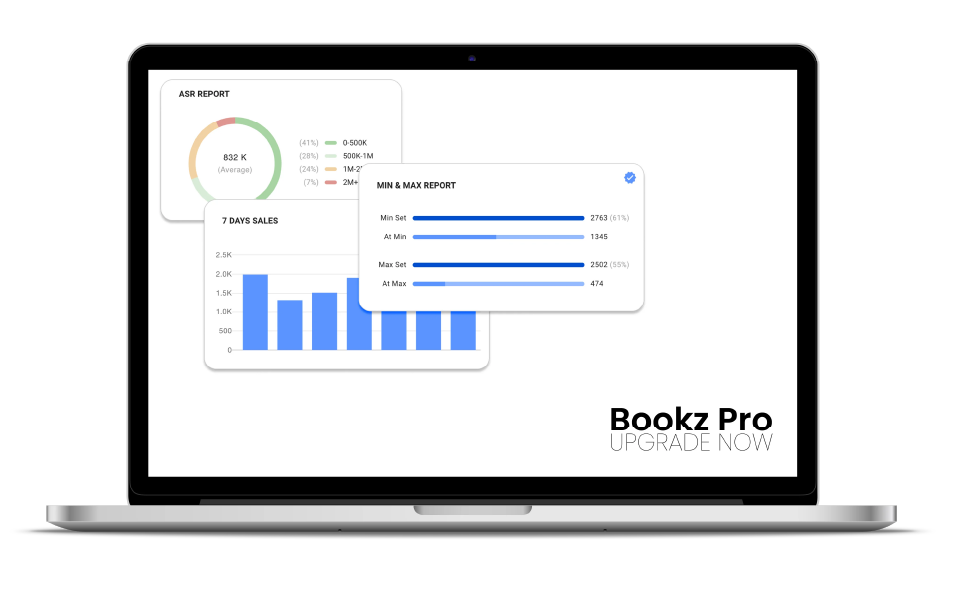All You Have To Know About Amazon Returnless Refund

Introduction
Returns can be a major headache for retailers, especially smaller ones. In fact, around 9% of brick-and-mortar purchases and one in five e-commerce purchases are returned.
Processing returns can be costly and time-consuming. In most cases, you must pay for return shipping, process the return, and restock the item. Sometimes, the returned items cannot be resold because they are broken or single-use.
It is no wonder that returns can cost retailers up to two-thirds of a product’s sale price. This is why Amazon returnless refunds are becoming more popular. They offer a way to reduce the stress and cost of returns, making it easier for retailers to focus on what matters most – selling products and building customer relationships.
What is Amazon Returnless Refund?
Returnless refunds are a game-changer for online shoppers. They allow buyers to receive a refund for their purchase without having to return the item. This feature is available on select products and is designed to make the refund process easier and more convenient for both buyers and sellers.
Let’s say a buyer buys a small, inexpensive electronic gadget online because it doesn’t meet your expectations. In the past, the buyer would have had to go through the hassle of initiating a return, packaging the item, and sending it back to the seller. However, with returnless refunds, this process is eliminated. The buyer can simply request a refund, and the seller will issue it without requiring you to return the item.
Moreover, there can be a negotiation made between the buyer and seller regarding the returnless refund. For example, the seller may offer the buyer the option to keep the item and receive a partial refund, such as 75% of the purchase price, instead of a full refund. This arrangement can benefit both parties, as the buyer gets to keep the product at a discounted price, and the seller can minimize their losses by not having to process a full refund and deal with the returned item.
This not only saves you time and effort but also reduces the environmental impact of unnecessary returns. When a buyer requests a returnless refund, they don’t have to return the product to the seller. Instead, they receive a refund for the purchase price and keep the item. This saves time and effort for both parties involved. Additionally, it allows sellers to avoid the costs associated with processing returns, such as restocking fees and shipping expenses.
Why would Amazon sellers initiate a returnless refund?
It is a great way to satisfy customers if the seller faults returning an item, which would take some time for the buyers. Also, it may not be worth paying the return shipping cost if the item’s price is low enough.
Amazon sellers may initiate a returnless refund for several reasons. First, if the seller is at fault, a returnless refund is a great way to satisfy the customer quickly without having to wait for the buyer to return the item, ensuring customer satisfaction and maintaining a positive reputation. Second, if the item is inexpensive, it may not be worth paying for the return shipping cost, making a returnless refund a cost-effective solution.
Finally, the Amazon Returnless Refund was designed to help eCommerce companies like Amazon sellers efficiently handle returns without wasting time and resources. This allows sellers to save time and focus on other aspects of their business.
How To Get an Amazon Returnless Refund?
Amazon uses algorithms and policies to determine which products are eligible for returnless refunds, considering factors like product cost, type, return history, customer feedback, and satisfaction.
Steps to Get a Returnless Refund:
- Log into your Amazon account.
- Navigate to order history or specific order.
- Click “Request a refund.”
- Select the reason for the refund.
- Choose the returnless refund option.
- Submit request.
Once submitted, the buyer will receive confirmation and a refund. The process is quick and efficient, allowing buyers to receive refunds without returning items.
Amazon provides a seamless return experience for cases where returnless refunds are not applicable. Buyers can initiate returns by following a similar process. Amazon’s customer service team is available 24/7 to assist with any questions or issues.
Advantages of Amazon Returnless Refund
When considering the Amazon Returnless Refund, keep these benefits in mind:
- Lower Costs: With traditional returns, you pay for shipping costs, which can be costly if the item is defective or damaged. With a returnless refund, you avoid these costs, especially for low-value items.
- Faster Processing: Traditional returns require the customer to ship the item back, which can take time. With a returnless refund, the process is quicker, taking only one to two business days after the refund request.
- Good for the Customer and the Planet: By allowing customers to skip the hassle of returning items, you improve their experience and increase loyalty. Additionally, you can participate in sustainable logistics practices, reducing carbon emissions and landfill waste.
- Increased Customer Satisfaction: By providing a seamless refund experience, you show your customers that you care about their satisfaction and are committed to making their experience as smooth as possible.
Overall, the Amazon Returnless Refund offers numerous benefits for both you and your customers. It can help you save time and money, improve customer satisfaction, and contribute to a more sustainable future.
Drawbacks of Amazon Returnless Refund
Amazon’s returnless refund policy can cause issues for sellers if customers abuse it. Here’s how it works:
Avoiding Profit Loss from Excessive Returnless Refunds on Amazon
When a customer requests a returnless refund, Amazon refunds the purchase price minus shipping and handling since Amazon still charges the FBA fees. This can lead to problems if your margin is very thin.
For example, if a $20 item is returned, the seller may only receive $14.50 after the refund. The seller must either accept the loss or raise prices to recoup the difference.
Scammer Risks
While this policy seems customer-friendly, it also opens the door for potential scams. Dishonest buyers could claim non-receipt or return damaged items, forcing the seller to refund without getting the item back.
To protect yourself as an Amazon seller, consider disabling the returnless refund option in your account settings. This can help prevent abuse and minimize your profit losses.
Streamline Your Amazon Business with Bookz Pro
All in One Software
for Book Sellers
Scout Better – List Faster – Reprice Smarter
Over 30% Business Growth
Achieved by Our Clients

Are you an Amazon seller struggling with pain points in your business? Bookz Pro has a range of software products designed to help you overcome those challenges and take your business to the next level.
Schedule a demo today, and let our team show you how our innovative solutions can simplify your operations, boost your efficiency, and drive your success on the Amazon marketplace. Don’t let your business challenges hold you back any longer. Take the first step towards a more streamlined, profitable, and successful Amazon selling experience with Bookz Pro.
Conclusion
Amazon’s returnless refund feature can benefit sellers in certain situations by streamlining the refund process and reducing costs. However, it may not be suitable for all products or customers.
Understanding the limitations and proper use of this feature is crucial. Sellers should carefully evaluate when to enable returnless refunds to reduce return hassles, save on shipping, and improve customer satisfaction – without exposing themselves to potential abuse.
Sellers can optimize their Amazon selling operations by strategically leveraging the returnless refund option and enhancing their overall e-commerce success.
Frequently Asked Questions
When a returnless refund is issued, the buyer keeps the item while receiving a refund for the purchase price. Sellers are notified, allowing them to address customer experience and product concerns.
Returnless refunds streamline the return process, benefiting both buyers and sellers. While potential drawbacks exist, Amazon’s policies aim to maintain fairness and customer satisfaction. As e-commerce evolves, this feature will likely remain valuable in the online shopping landscape.
No. Amazon determines eligibility based on product value, type, and return history. High-value, fragile, or frequently returned products may not be eligible.
For products that are not eligible for returnless refunds, you must follow the standard return process, which includes the customer returning the item to you and processing the refund.
As an Amazon seller, you can set criteria for which products qualify for returnless refunds. Amazon automatically determines eligibility and processes refunds within 1-2 days.
While there are no limits on returnless refund requests, Amazon monitors for potential abuse to prevent fraud.
Yes, sellers can opt out of Returnless Refunds if they prefer that customers return the item. They can do this by adjusting the “Return Settings” in Seller Central.



